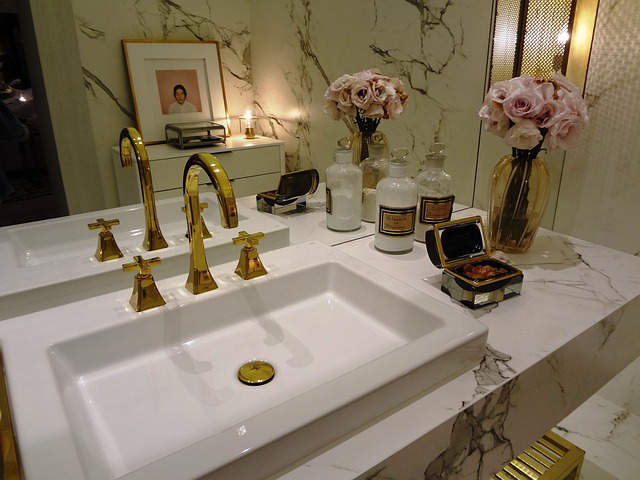Designing bathroom light is a complex thing to accomplish. Even a small bathroom with adequate bathroom lighting can make a huge difference. Luxurious large spaces can create an atmosphere of rest and relaxation. This is done by using layers of light that illuminate the busy areas like the shower or vanity, while casting a glow on attractive features like artwork.
How to use a bathroom light:
For functional and visually pleasing lighting in a bathroom, you might need to consider the following strategies:
Prevent vanity shadows:
If you have incorrect lighting at your vanity such as a single overhead light, it actually places a lot of shadows and you will struggle to fix your hear, shave or put on some make up.
The best way to illuminate the vanity, would be to place two wall-mounted lights on either side of the mirror at eye level. This creates enough light so that there are no shadows and you get the optimum light for all facial tasks.
Fancy up your bathtub a little:
Accent lighting will dress up the space and create a relaxing atmosphere to the the warm glow. You could try using a mini chandelier to add a bit of elegance.
Installing these little lights underneath base cabinets will provide soft illumination at night. This enables you to navigate your home in he middle of the night without hurting your eyes.
Add some elegance to your mirror:
You can back light a mirror by wrapping lighting around the back side. If it is done correctly, you will notice a halo effect around it. It is an easy way to light the bathroom without turning on the main lighting but do not substitute it for functional task lighting at the vanity.
Different layers of light:
There is no such thing as a light that does everything but some lights will perform more than one role. In order to make the right choice, you need to understand the different layers of light.
Task lighting
This lighting illuminates the busy areas, which is probably your bathroom vanity or shower. The best task lighting at the sink area, is two lights that flank the mirror to provide cross illumination. With this method, you will prevent shadowing.
Accent bathroom Light
This form of lighting adds depth and dimension to the environment. You can use it to highlight plants or artwork, and give the area an illuminating glow.
Decorative bathroom light
This is purely eye candy as people say. The purpose of decorative lighting is to add interest to a space.
Ambient Lighting
This gentle light fills the room and bounces off the ceiling. Tubs and showers need general light, and recessed fixtures with white opal diffusers are one solution.
A single layer of light can never stand alone. If you only use ambient light, the people will look great because shadows are softened, but it might look like a cloudy day inside because there is no depth or dimension.
A room with only decorative lighting will distract the eyes every time
If you only incorporate accent lighting, you might create a museum effect. Every object would look great but people will be in a lot of shadows. Which are more important though, your stuff or friends and family?
How to choose energy-efficient lighting:
When you are looking for some energy-efficient light bulbs, there are three qualities that you need to consider:
Color temperature: a bulb should be between 2700 and 3000 kelvin. This ensures that your lighting blends in with incandescent lighting in residential areas.
CRI rating: Color rendering index (CRI) is important because it is how color is interpreted. A low CRI will mean that there is more gray, while a higher CRI will mean that the colours rendered, would be seen better. It is recommended that you use a CRI of 80.
Energy Star: This certification ensures that the light bulb went through longevity testing and has a minimum CRI of 80.




